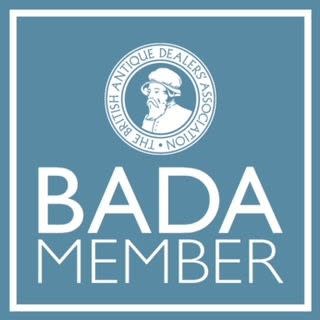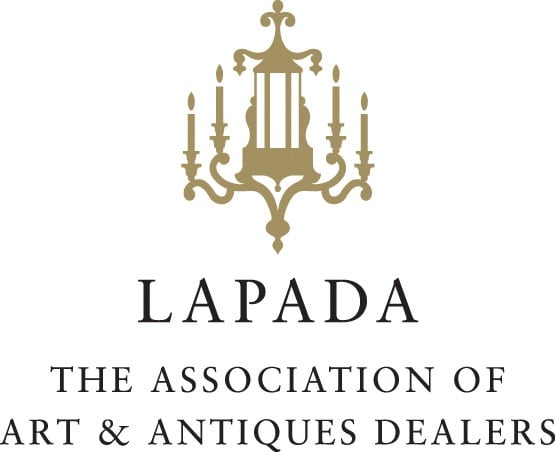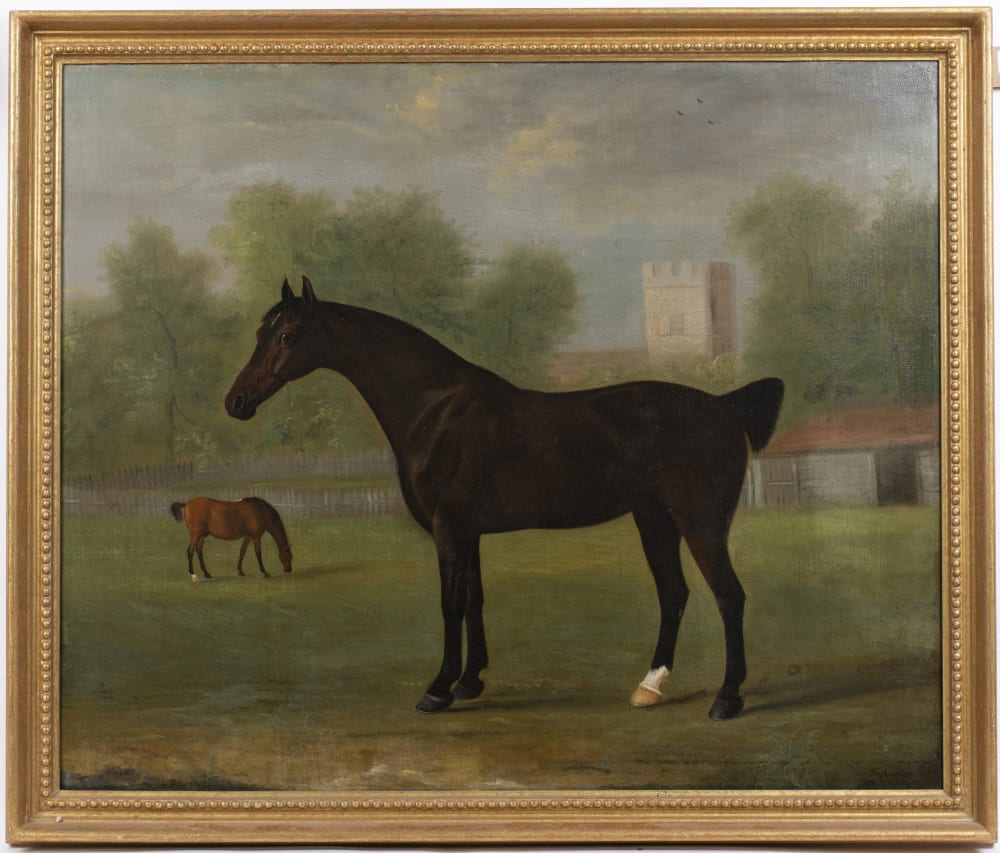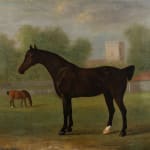Francis Sartorius (1734-1804)
Provenance
Private collection, Oxfordshire
Literature
Foley, C. Sartorius family (per. c. 1730–1831), painters. Oxford Dictionary of National Biography.
Sally Mitchell, The Dictionary of British Equestrian Artists, 1985.
A dark bay horse in a paddock with another bay horse grazing in the distance, a village church beyond, Signed and dated 1776.
Oil on canvas, in a period giltwood frame.
Francis Sartorius (1734-1804) was an English painter of horses, horse-racing and hunting scenes, of the celebrated Sartorius family of artists. Also known as Francis Sartorius the Elder to distinguish him from his grandson Francis Sartorius Jr. ("the Younger") who was a marine painter.
Francis was the son and pupil of John Sartorius. His first important work was a portrait of the racehorse "Antinous" (foaled 1758), for the Duke of Grafton. Other horse-portraits were "Herod" (foaled 1758) for the Duke of Cumberland; "Snap" for a Mr. Latham; "Cardinal Ruff" for a Mr. Shafto; and "Bay Malton" for the Marquis of Rockingham. Several of these portraits were engraved by John June (fl. 1740-70), and published between 1760 and 1770.
Sartorius was a prolific and popular painter, and it is said that he produced more portraits of the famous race-horse "Eclipse" during the zenith of his fame than all other contemporary artists together (Bailys Magazine, January 1897, p. 23). He was a contributor to "The Sporting Magazine" and in vols. ii-vi. (1793–1795) are four engravings from his works, including the famous racehorse "Waxey" (sired by the notable thoroughbred "Pot-8-Os").
Francis contributed thirty-eight works for exhibition at various London galleries including twelve to the Royal Academy, seven to the Society of Artists and twenty to the Free Society of Artists.
He lived in London during the years he was exhibiting, settling in Soho, at 17 Gerrard Street, although he did travel for commissions. He was among the first sporting artists to visit and paint in Ireland, where he worked for the second earl of Aldborough at Baltinglass, co. Wicklow (1787). He was also working on Irish commissions towards the end of his life. His sole published autograph letter is from Belmont, Cheshire, and is addressed to John Smith-Barry in Merrion Square, Dublin, and dated 11 August 1800. It confirms a commission for a painting of mares and foals on 'a piece of canvas six foot long by two foot' for which the price is to be 'three guineas a horse'. (Repository of Arts)
He died on 5 March 1804, in his 70th year. His son, John Nott Sartorius (1759–1828) was also a notable horse artist.
-

-
 English SchoolA Bay Hunter and a Terrier in a Landscape, 1819Oil on canvas68 x 86cm£6,500.00%3Cdiv%20class%3D%22artist%22%3EEnglish%20School%3C/div%3E%3Cdiv%20class%3D%22title_and_year%22%3E%3Cspan%20class%3D%22title_and_year_title%22%3EA%20Bay%20Hunter%20and%20a%20Terrier%20in%20a%20Landscape%3C/span%3E%2C%20%3Cspan%20class%3D%22title_and_year_year%22%3E1819%3C/span%3E%3C/div%3E%3Cdiv%20class%3D%22medium%22%3EOil%20on%20canvas%3C/div%3E%3Cdiv%20class%3D%22dimensions%22%3E68%20x%2086cm%3C/div%3E%3Cspan%20class%3D%22price%22%3E%C2%A36%2C500.00%3C/span%3E
English SchoolA Bay Hunter and a Terrier in a Landscape, 1819Oil on canvas68 x 86cm£6,500.00%3Cdiv%20class%3D%22artist%22%3EEnglish%20School%3C/div%3E%3Cdiv%20class%3D%22title_and_year%22%3E%3Cspan%20class%3D%22title_and_year_title%22%3EA%20Bay%20Hunter%20and%20a%20Terrier%20in%20a%20Landscape%3C/span%3E%2C%20%3Cspan%20class%3D%22title_and_year_year%22%3E1819%3C/span%3E%3C/div%3E%3Cdiv%20class%3D%22medium%22%3EOil%20on%20canvas%3C/div%3E%3Cdiv%20class%3D%22dimensions%22%3E68%20x%2086cm%3C/div%3E%3Cspan%20class%3D%22price%22%3E%C2%A36%2C500.00%3C/span%3E
Join our mailing list
* denotes required fields
We will process the personal data you have supplied to communicate with you in accordance with our Privacy Policy. You can unsubscribe or change your preferences at any time by clicking the link in our emails.
Old master, British and European paintings and sculpture from the 16th To 19th century


+44(0)7984 699799 CONTACT@ISHERWOODFINEART.COM
This website uses cookies
This site uses cookies to help make it more useful to you. Please contact us to find out more about our Cookie Policy.






